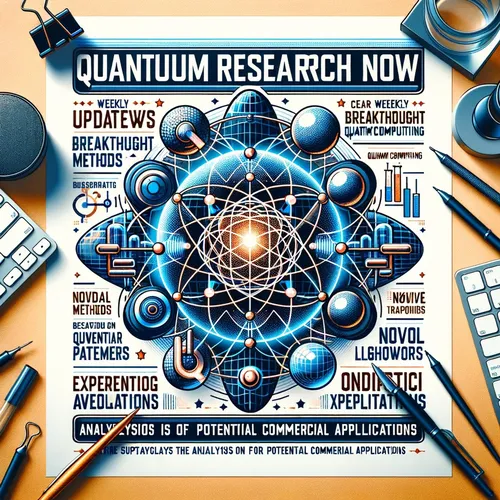Fujitsu's 10,000 Qubit Leap: Unleashing Quantum Computing's Potential
- Author
- Quiet. Please
- Published
- Sun 03 Aug 2025
- Episode Link
- https://www.spreaker.com/episode/fujitsu-s-10-000-qubit-leap-unleashing-quantum-computing-s-potential--67237235
This is your Quantum Research Now podcast.
Today, the quantum world shook a little—well, maybe more than a little. Fujitsu just announced it’s breaking ground on a superconducting quantum computer with more than 10,000 physical qubits, targeting completion by 2030. If you’re picturing the hum of energy in a Tokyo lab, tape-wrapped dewars and liquid helium pooling beneath a shimmering array—the scene is every bit as electrifying as it sounds.
I’m Leo, a Learning Enhanced Operator, here to walk you through why this is momentous. For years, experts like Dr. Vivek Mahajan at Fujitsu and teams at RIKEN have wrestled with a riddle: how do we scale fragile quantum bits—qubits—into something robust enough for real-world problem-solving? Fujitsu’s answer is its STAR architecture, a new approach to early fault-tolerant computing. That’s technical talk, so let’s make it tangible. Imagine juggling balls in a hurricane: classic computers juggle one ball at a time, very quickly. Quantum computers, on the other hand, juggle all the balls at once. But wind—noise and errors—keeps blowing them off course. STAR is like teaching the jugglers to compensate mid-air, correcting trajectories on the fly and keeping more balls aloft longer.
Fujitsu isn’t working alone. With Japan's NEDO funding, and research powerhouses like AIST and RIKEN, this effort promises a leap to 250 logical qubits by 2030, with the ultimate goal of 1,000 logical qubits by 2035. Logical qubits are key—think of them as perfectly choreographed troupes formed from many flawed individuals. More logical qubits mean more useful computing power, and the threshold for outperforming any classical computer—so-called quantum supremacy—creeps closer.
Why does this matter outside the lab? Take climate modeling. Traditional simulations take months; quantum approaches could slice that down to days or hours. Fujitsu specifically aims at materials science—imagine designing a battery that charges ten times faster, or simulating new medicines on an atomic level before ever mixing chemicals in a beaker.
This isn’t happening in isolation. Just this week, I saw Quantinuum break ground on a new photonics-focused lab in New Mexico, accelerating research on the lasers that trap and read ion qubits. Startups like SuperQ are opening doors to education on quantum topics. The ecosystem is vibrant and swelling with possibility.
When I peer into the superconducting labyrinth, I see more than wires and wafers. I see our world mirrored: complexity, uncertainty, and—at the heart—moments of order and breathtaking potential. Quantum computing is evolving not in a straight sprint, but like a quantum superposition—all possibilities at once, yet slowly resolving into a new reality.
Thank you for exploring this journey with me today on Quantum Research Now. If you have questions or want topics explored, email me at [email protected]. Don’t forget to subscribe wherever you listen. This has been a Quiet Please Production—learn more at quietplease.ai. Stay curious!
For more http://www.quietplease.ai
Get the best deals https://amzn.to/3ODvOta
